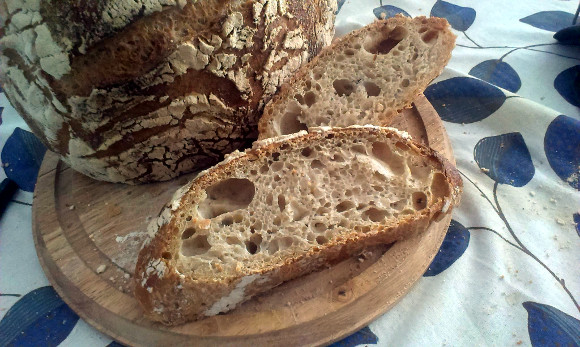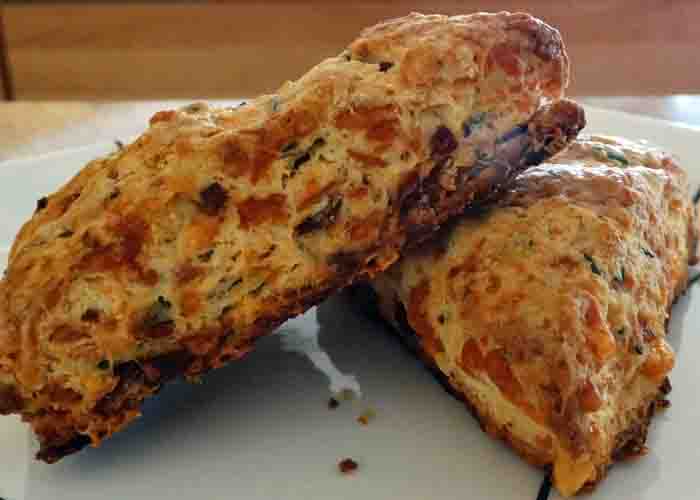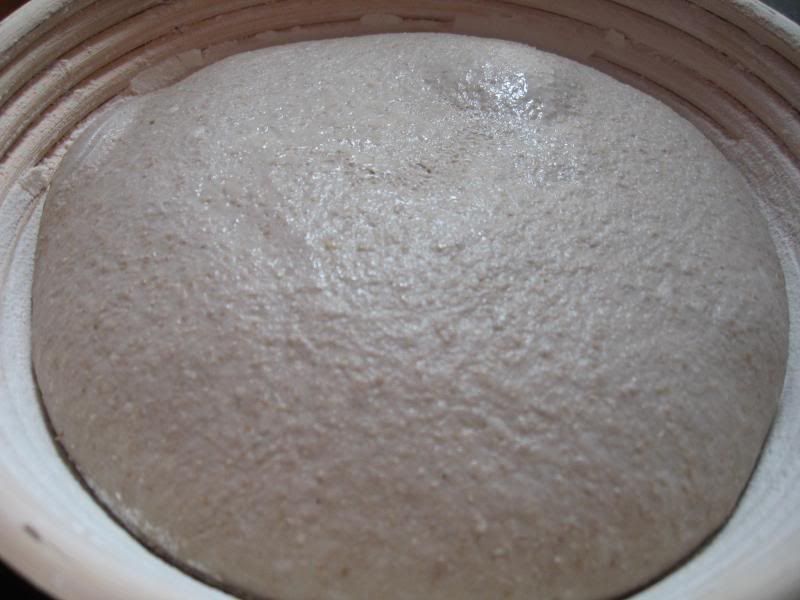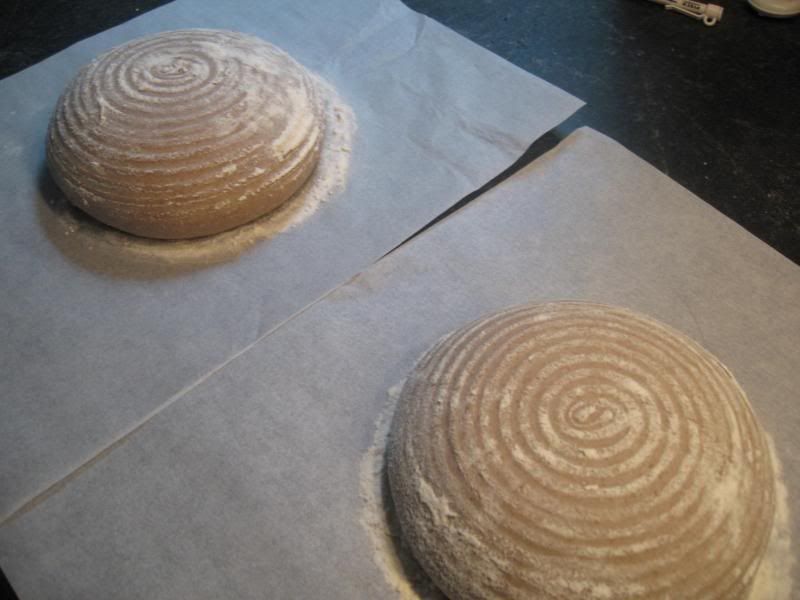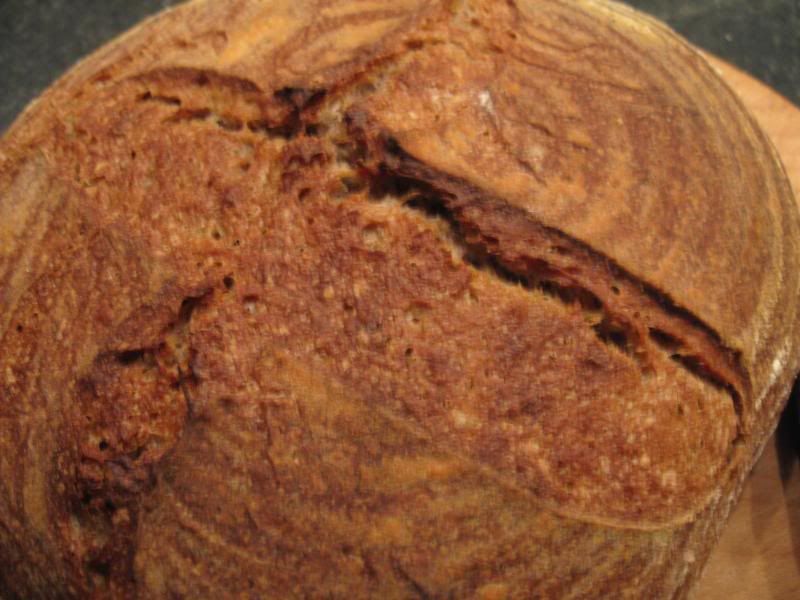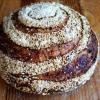
Seeded Naturally Leavened Sandwich Bread
I'm on a mission to not buy anymore bread. Sure, I'll still buy loaves from bakeries that I respect or that have an interesting loaf I want to try but when it comes to my daily sandwich loaves I've decided to make them myself from here on out. Why did I decide this? For one thing, I know how to make bread and I like doing it so it'd be kind of dumb not to. But the real reason stems from a recent visit to the local health food supermarket. While browsing the aisles, I decided to take a look at some sandwich breads and find out what they're made of. I expected the loaves at this store to contain whole ingredients with no added chemicals considering this was a health food store. For the most part the loaves had decent ingredients but I was surprised to find that almost every single sandwich loaf contained added gluten. I was a bit disappointed. I'm definitely not one to jump on the "gluten is evil" bandwagon, in fact I love gluten, but could the fact that we're pumping pure gluten into supposedly healthy loaves of bread have something to do with the rise in people who can't seem to tolerate it? I don't really have the answer to that question(and it doesn't seem like food scientists do either yet) but I do think I could do better than these supermarket breads from both a health and flavor standpoint.
My goal is to make great tasting sandwich breads that are healthy and last a long time. I will try to document many of them here.
The first loaf I've made in this endeavor is a naturally leavened 75% whole wheat sandwich loaf packed with seeds. If my goals are to have a tasty, healthy and long lasting loaf then I think I've definitely found it with this bread.
Flavor & TextureThe combination of toasted sunflower seeds, sesame seeds, millet, amaranth and flax seeds is insanely delicious. Honestly, it kind of blew me away. It has a perfect nuttiness that makes me want to eat endless slices of this bread on its own with nothing on it. The grocery store loaves this loaf is replacing cannot compete. The 75% whole wheat adds a nice robustness while still allowing for a nice open and soft texture.
HealthI recently read the bread chapter in Michael Pollan's new and highly fascinating book Cooked: A Natural History of Transformation, which I highly recommend reading as it was super informative about wheat, milling and the health properties of bread, and two things really stuck out in my mind regarding health. One, is that the way in which grain is milled has a substantial effect on the level of nutrition it contains. For example, the industrial method of milling uses roller mills and first separates the germ and bran(the healthiest parts of wheat) from the endosperm. This creates white flour. So when a big flour company wants to make whole wheat flour it must first make white flour and then add the germ and the bran back to the white. Apparently, many of the nutrients available in the wheat kernel are lost in this process. Traditional stone milling keeps the bran, germ and endosperm together at all stages of the milling process and preserves the entire nutritional spectrum of the wheat. Who knows what method of milling created the flour in the super market loaves!
Another thing that Pollan explains very well in his book is that whole wheat breads are made significantly more nutritious when used in combination with a sourdough culture. This is because the sourdough breaks down enzymes in the wheat that inhibit nutrient absorption in your body. The sourdough almost pre-digests the grain for you, making it easier to digest and significantly healthier. Given these two bits of information I decided to make this bread(and all future sandwich breads I make) with flour that has been stone milled and using a sourdough starter. This bread features hard red wheat flour from Community Grains, a flour company that stone mills and uses only wheat grown in California(might as well go local too!). It's also completely naturally leavened with a long bulk fermentation in the fridge to ensure that the grain is well broken down by the acids in the sourdough.
Long LastingI have made sandwich loaves in the past that were really good for the first couple days and then started to become very weak, dry and crumbly after that. It's hard to eat an entire loaf of bread in a couple days if you're only using it for your daily sandwich. So with this loaf I also wanted to put a focus on keeping quality. I did three things to help extend the life of the bread:
- I used sourdough which lowers the Ph of the bread(more acidic) which gives a stronger structure to the final product and inhibits mold growth.
- I used apple cider vinegar which has similar effects as the sourdough and acts as a preservative.
- I made this very high hydration at 95%. In my experience, the wetter your dough is the longer it takes to dry out. Some bakers, such as Richard Bourdon, also believe that wetter doughs allow the starches in the dough to cook more fully making the final product more digestible.
Conclusion
All in all, this loaf definitely met all my requirements of a good sandwich loaf. It is very tasty with the seeds and a very mild sourness from the sourdough. It is extremely healthy and so far after 4 days of use it still has a very soft and moist crumb. Success!
For the formula and more photos visit http://abreaducation.com/blog/?p=349








